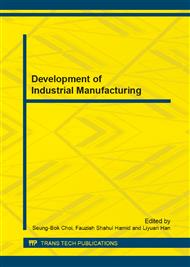p.85
p.89
p.93
p.97
p.101
p.108
p.117
p.123
p.128
The Effect of pH and Heat Treatment on the Porous TiO2 Nanostructures Derived from Triblock Copolymer Templating-Precipitation Technique of TiOSO4 Solution
Abstract:
The synthesis and characterization of TiO2 nanostructure has become intensive nowadays because of its superior properties among other semiconductor materials. In this work, TiO2 nanostructures have been derived from ilmenite mineral by using precipitation technique with various pH and calcination temperature. The resulting nanostructures were characterized to investigate the effects of those variables on the phase, crystallite size, and band gap energy. The characterization was performed by using XRD, FT-IR, UV-Vis DRS, SEM, EDS, and TEM. The results showed that TiO2 sample prepared under low pH value of 0.3 demonstrated porous structures although they are not well-ordered yet, while the sample with a pH adjustment up to 7.0 provided nanotube structure. The biggest crystallite size of 3.43 nm and low band gap energy of 3.07 eV was obtained in the TiO2 samples synthesized without pH adjustment and calcined at a a temperature of 300°C. This characteristics shows that TiO2 nanostructure in this study is potential for the applications of dye sensitized solar cell (DSSC) and photocatalysist.
Info:
Periodical:
Pages:
101-107
Citation:
Online since:
February 2014
Keywords:
Price:
Сopyright:
© 2014 Trans Tech Publications Ltd. All Rights Reserved
Share:
Citation:


